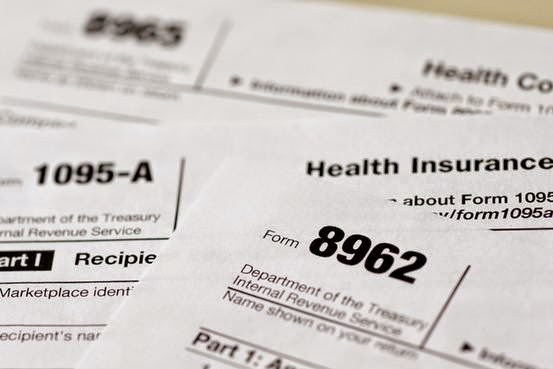Penalty for those without health insurance in 2015 will be significantly higher than for 2014; Feb. 15 is deadline to sign up

 |
| Wall Street Journal photo illustration |
One aspect of the Patient Protection and Affordable Care Act supporters don’t spend much time talking about is the part of the law that imposes a penalty on those who don’t have insurance, but the time has come for the uninsured to pay up.
This is the first year taxpayers are required to report to the Internal Revenue Service whether they have health insurance, and charged a fine if they don’t, as required by the federal health care law.
This year’s fine is $95 per adult or 1 percent of the household income, whichever is greater. This fine will increase significantly in 2015 to $325 per adult or 2 percent of household income, whichever is greater. And will increase again in 2016 to $695 per adult or 2.5 percent of income, whichever is greater.
Dayna Dayson of Phoenix, Ariz., estimates that she’ll have to pay $290 in fines this year when she files her federal return, Ricardo Alonso-Zaldivar reports for The Associated Press. Dayson, who’s in her early 30s and works in marketing, said she would like to have health insurance, as required by the law, but can’t afford it.
“It’s touted as this amazing thing, but right now, for me, it doesn’t fit into my budget,” she told AP.
Kentuckians can sign up for health insurance through Kynect, the state’s health insurance exchange. Jan. 15 is the deadline to get covered by Feb. 1 and those who sign up by Feb. 15, the final enrollment deadline for 2015, will get coverage beginning March 1. Medicaid enrollment is open year-round.
While many, like Dayson, find paying for health insurance “doesn’t fit into the budget,” one way to save money when choosing a plan is to make sure you choose a plan with the best deductible option for your family, Michelle Andrews reports for Kaiser Health News.
Typical plans have a single out-of-pocket deductible that must be met for the entire family before insurance will start paying. But some plans offer both a total family deductible and a separate deductible for each family member. For example, a $3,000 deductible family plan might have separate $1,000 deductibles for each family member, Andrews reports.
This type of plan is a good option if one family member requires more medical care than the others over the course of the year, Sabrina Corlette, project director at Georgetown University‘s Center on Health Insurance Reforms, told Andrews.
This plan allows the insurance company to start paying for all of this one family member’s medical bills after their embedded-individual-deductible is met, even if the family has not reached its total out-of pocket payment, Andrews writes.